Travel guide
Visiting Bogotá and Latin America for the first time can be a life changing experience. Bogotá is a big metropolis, where things are chaotic and move fast.
Bogotá welcomes everyone, from all corners of the country or other parts of the world. We want to make your visit sail smoothly. Please keep this travel guide easily accesible before and during your stay. We may update parts of it as the conference approaches so check it periodically.
Before you fly
This section includes information to keep in mind before travelling to Bogotá. Be sure to check it thoroughly before buying your plane tickets.
When to fly
Preconference activities are scheduled from October 9th to October 10th in Bogotá. These activities will be free of charge and will be open to everyone who seeks to exchange knowledge and inspiration of the creative practices. We will soon be posting the detailed information about these preconference activities.
If you are a presenting author, please be aware of the pre-setup days needed for your project when organizing your trip.
Visa and Entry to Colombia
Citizens of several countries do not need a visa to enter Colombia as a tourist for up to 90 days. For more information about VISAS visit the website of the Ministry of Foreign Affairs.
Apart from your Visa requirements, Colombian Law states that all foreign visitors who engage in academic activities should enter the country with a special permission called Permiso de Ingreso y Permanencia (PIP as it appears in the invitation letter we sent you after you acquired your ticket). To fulfill this requisite please print out your invitation letter and provide a copy together with your passport to the immigration officer at the board of entry. They will then issue your PIP. Be sure to keep it for the duration of your stay.
Please check your invitation letter to confirm the name is written in the same way as it is in your passport and the passport number matches. Let us know if you have any issues with your letter as soon as possible, by writing to pabellon@uniandes.edu.co.
What to pack
Bogotá is located 2,640 meters (8661 feet) above sea level. It is known for its harsh rainfall, strong winds, cold nights and (sometimes) sunny afternoons. The temperature oscillates between 20ºC (mostly during the day) and 7ºC (usually at night). Please pack accordingly.
The Colombian electrical system runs at 110V with a Type B three prong outlet or a Type A two prong outlet (more information here). Make sure to bring your adapters.
Currency & money exchange
The official currency of Colombia is the Colombian Peso (COP). In Bogotá, international credit and debit cards are widely accepted in most establishments, including hotels, restaurants, and larger retail stores. However, it’s always a good idea to carry cash for local transportation or establishments that may only accept cash payments. There are numerous currency exchange offices, known as “casas de cambio,” located throughout the city. These can be found in airports, shopping malls, financial districts, and some banks also provide currency exchange services. We recommend using authorized currency exchange offices or banks to ensure the safety of your transaction.
Additionally, ATMs are widely available throughout Bogotá, and most accept international cards. It’s advisable to inform your bank of your travel plans beforehand to ensure smooth ATM withdrawals and to check for any potential foreign transaction fees.
Where to stay
Bogotá is a large city with a lot of tourism and options for accomodation, from independent BnB’s to large chain hotels. We have negotiated special prices for Pavilion attendees at our recommended hotels below:
-
BH Bicentenario
Cra 4 #16-03
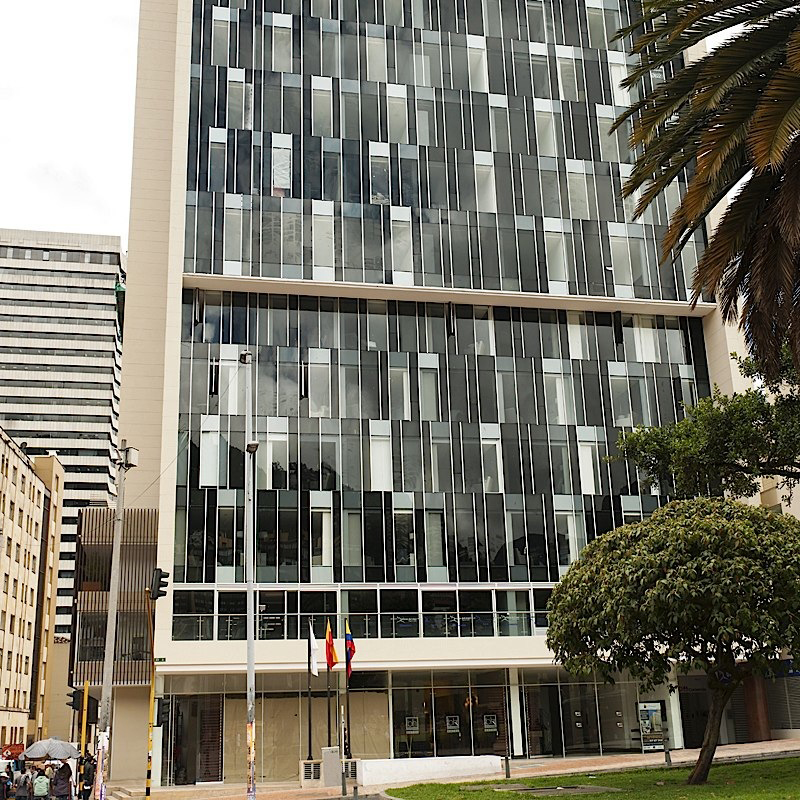
12Min
4Min
Discounted price per night
205.000 COP - 255.000 COP
Book with discountPrices per night do not include taxes which are paid on arrival.
-
Mercure Zona Financiera
Cra 7 #65-01
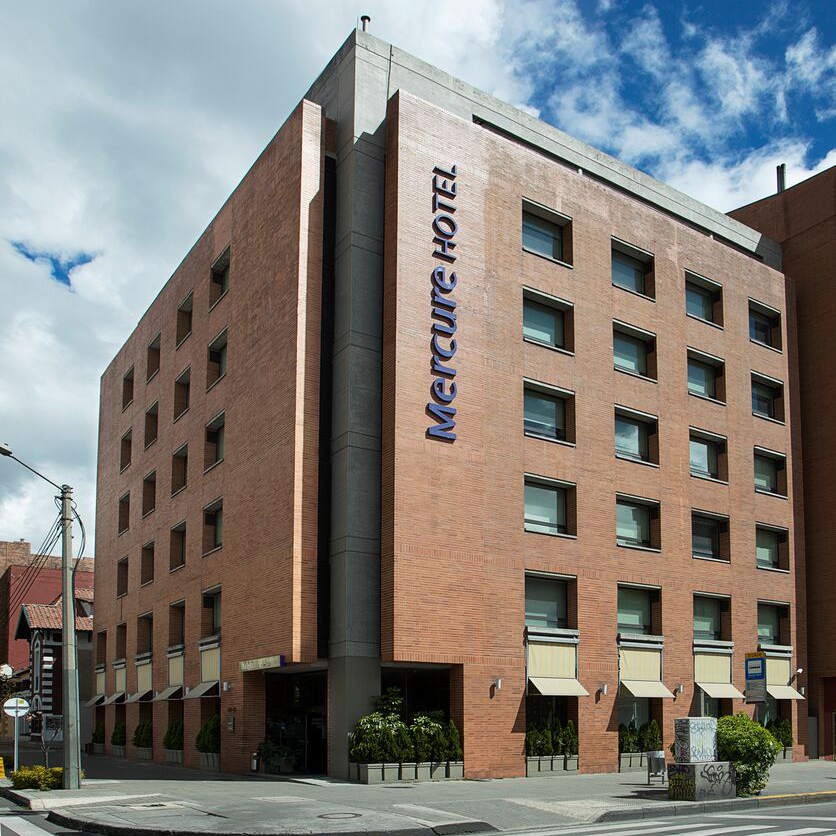
34min
22Min
Discounted price per night
215.000 COP - 295.000 COP
Book with discountPrices per night do not include taxes which are paid on arrival.
-
BS Rosales
Cra 4 #72-22
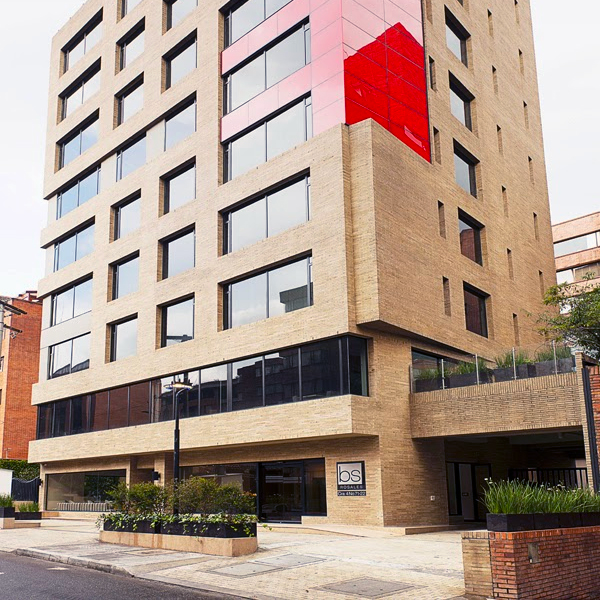
45min
20Min
Discounted price per night
235.000 COP - 315.000 COP
Book with discountPrices per night do not include taxes which are paid on arrival.
-
BH La Quinta
Cra 5 #74-52
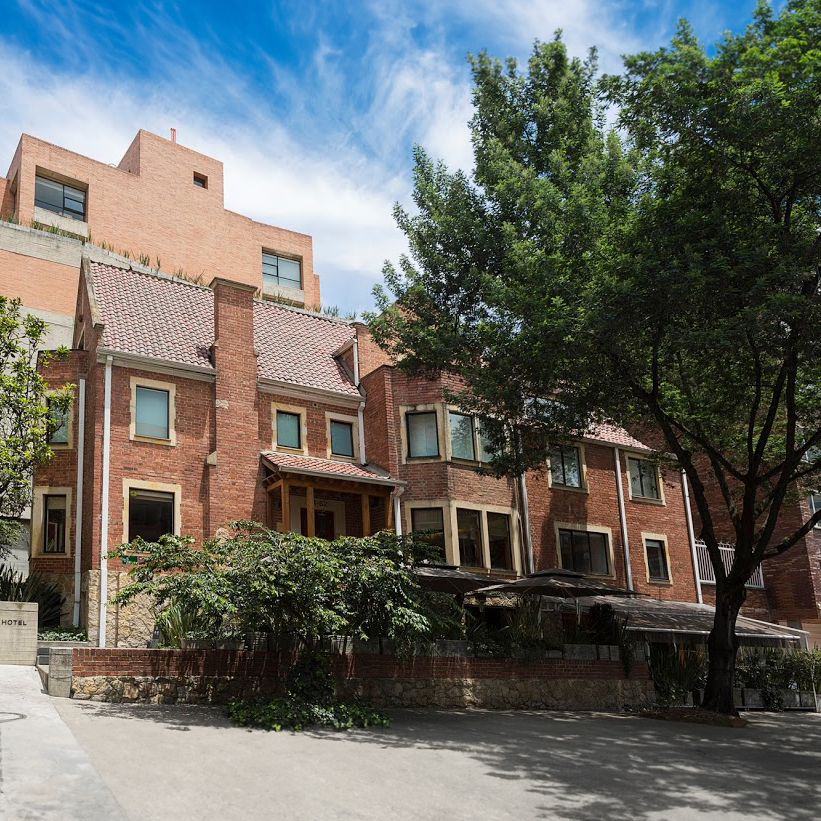
48min
20Min
Discounted price per night
235.000 COP - 315.000 COP
Book with discountPrices per night do not include taxes which are paid on arrival.
-
Ibis Bogotá Museo
Tv. 6 #27-85
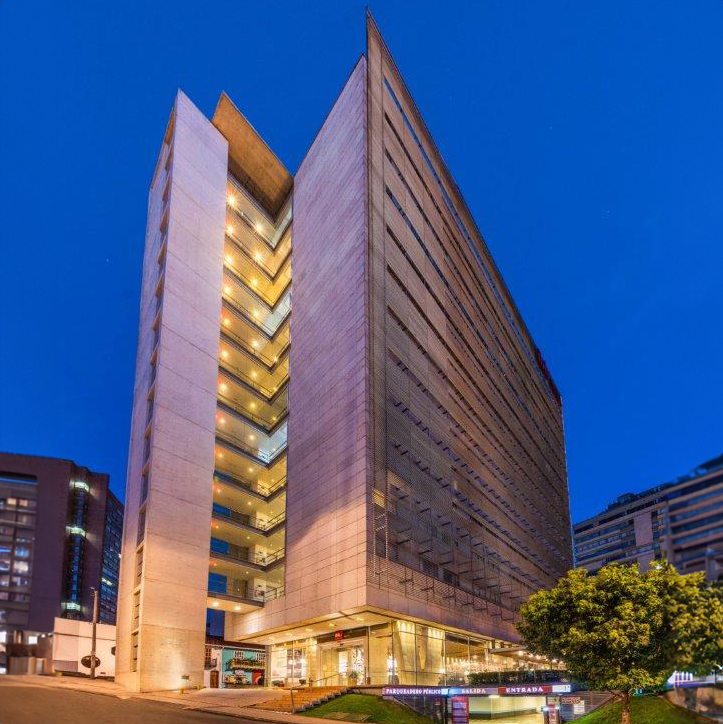
30Min
15Min
10Min
Discounted price per night
205.000 COP - 255.000 COP
Book by emailBooking must be done by emailing reservas.ibisbogotamuseo@accor.com and cc-ing nelly.castellanos@accor.com. Include the reservation code: CZ2P1T. Prices per night do not include taxes which are paid on arrival.
Local transportation
Bogotá has a rather large public transportation system as well as alternative methods of transportation. Please consider all of your options in this section.
From the airport to your hotel
Once you leave baggage claim, please search for the authorized cab line (cabs in Bogotá are yellow) just outside the exit door. Although there are other modes for transportation, taxis’ fares are reasonable and we consider it the safest option. You should expect to pay between 10 to 20 dollars to your hotel, depending on the distance (in Colombian Pesos cash only, you can find Money Exchanges and ATMs inside the Airport) .
If you need a receipt, make sure to let the cab line attendant know, as not all taxis have the paper to make it for you.
Getting to the conference & navigating the campus
The conference registration will be located at Universidad de los Andes’ ML Building (Calle 19A No. 1– 82 Este). Students will be at the entrance holding distinctive Pavilion flags, they will guide you inside.
Once you have your conference materials be sure to wear your badge at all times, since you will need it to get in and out of campus (Los Andes has a closed campus) as well as to receive your lunch and snacks.
Most conference activities will occur inside the University’s campus. You may use the campus map to guide yourself while walking from building to building.
Transportation options
Bogotá has quite a few transportation options. Click on any of the sections below to learn how each works.
Transmilenio and SiTP
TransMilenio is the world’s largest BRT (Bus Rapid Transit) system serving many areas of the city. The service is frequent and cheap (a single fare is COP$2,950). Generally, lines run from 4:30am to midnight Monday to Saturday and 6am to 11pm on Sundays, though some lines begin earlier and run later.
SiTP is an urban bus system that consists mainly of: servicio urbano (blue buses, covering routes not served by TransMilenio), servicio complementario (orange buses; serving routes to and from nearby TransMilenio stations), servicio alimentador (green buses; serving routes to and from TransMilenio stations). All the buses have a route sign in the front telling you where they go. If you are going to a well-known place—a shopping centre, museum, main street, etc… you shouldn’t have a problem catching a public bus. However, if you only know the address of the place you are trying to get to, taking a public bus might be difficult, especially if you don’t speak Spanish.
Both types of transportation are paid solely through the smart card tullave, which costs COP$7,000. This pay-as-you-go ticket must be pre-loaded with credit before travel (up to COP$100,000). The card is sold at all TransMilenio stations; it can be topped-up at all stations as well as some pharmacies and papelerías (more info at tullaveplus.gov.co).
If you are interested in using this transportation option, you may want to consider downloading the Moovit app or TransmiApp on your smartphone to plan your trips.
Be wary that during peak hours (5am-9am and 4pm-7pm), both TransMilenio and SiTP can be very full. Try to plan travel outside peak hours.
Bicycles
Bogotá has one of the world’s most extensive bike-route networks, with more than 375km of separated, clearly marked bike paths called CicloRuta. Free Bogotá maps from PIT information centers show the CicloRuta paths.
In addition, about 121km of city roads are closed to car traffic from 7am to 2pm on Sundays and holidays for the citywide Ciclovía.
If you’re looking to rent bikes, Tembici, the largest Latin American bicycle-sharing system has more than 300 stations all over Bogotá. Using its smartphone app you can rent bikes in any station and return them in any other station, paying per trip or buying a day-plan, month-plan or year-plan. They offer both traditional mechanical bikes, as well as electrically-assisted pedal cycles. However, they do not lend helmets, so be sure to bring your own!
Uber Green & taxis
If you’re looking for a sustainable alternative for car transportation, you can use Uber Green. By choosing this option in the app, you will be connected with hybrid and fully electric vehicles, paid in-app with your registered payment method.
Bogotá is also full of taxis. These can be a good way to get around the city. However, make sure you use radio taxis —that is, phone a taxi company that will give you a code as well as the license plate of the taxi that will pick you up. These taxis must be paid in cash with Colombian pesos. Another safe alternative is to order cabs using an application like Cabify. These allow you to pay in-app using your credit card.
Intermunicipal buses
If you are looking to escape to some of the towns around Bogotá, your best bet is to head to the intermunicipal bus station (Terminal de Transporte). Here, you can take buses to practically anywhere in the country, including towns close to Bogotá like Zipaquirá, Chía, Cajicá, and Facatativá, among others. Most buses to these towns have various services throughout the day.
General considerations
For most of your transportation in Bogotá, make sure you have Colombian Peso cash on hand, especially lower denomination bills and coins. It will be hard to get change for a 50.000-peso bill, and sometimes even for a 20.000 depending on the bus or taxi you may catch.
Emergency contacts
Police
Metropolitan Police (Policía Metropolitana) – Phone: 112
CAI Immediate attention center – Phone: 156
Tourist Police – Phones: (601) 337-4413 – (601) 243-1175
Medical emergencies
Emergency line: 123
Medical emergencies Phone: 125
Other useful contacts
Information Phone: 114
Ministry of Foreign Affairs of Colombia
Immigration and Visas – Address: Carrera 13 # 93-68 Of. 203
Phones: 640-8576, 640-8977, 640-8987, 640-8997
Central Operator Phone: 566-2008
Share your thoughts
By sending a message you agree to our terms and policies. This site is protected by reCAPTCHA and the Google Privacy Policy and Terms of Service apply.